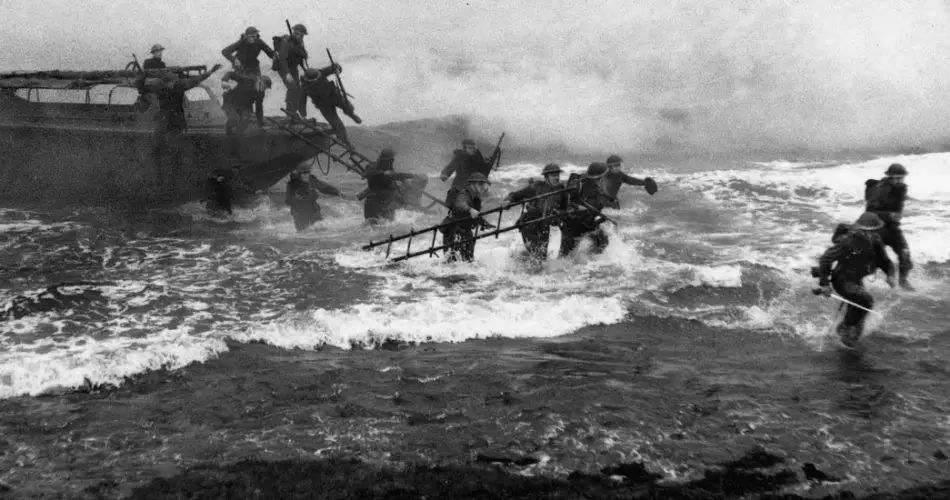World War II was a conflict defined by tanks, bombers, and grim mechanization. Yet amidst the industrialized carnage, one British officer fought as though he’d stepped out of a medieval ballad.
Lieutenant Colonel John Malcolm Thorpe Fleming Churchill—known as “Mad Jack”—charged into battle with a Scottish claymore sword, a longbow, and a set of bagpipes, blending audacity, humour, and unshakable courage.
His story is not just one of wartime heroics but of a man who defied the very notion of modern warfare, proving that eccentricity could be as disarming as a bullet.
Early Life and Military Beginnings: The Making of a Misfit
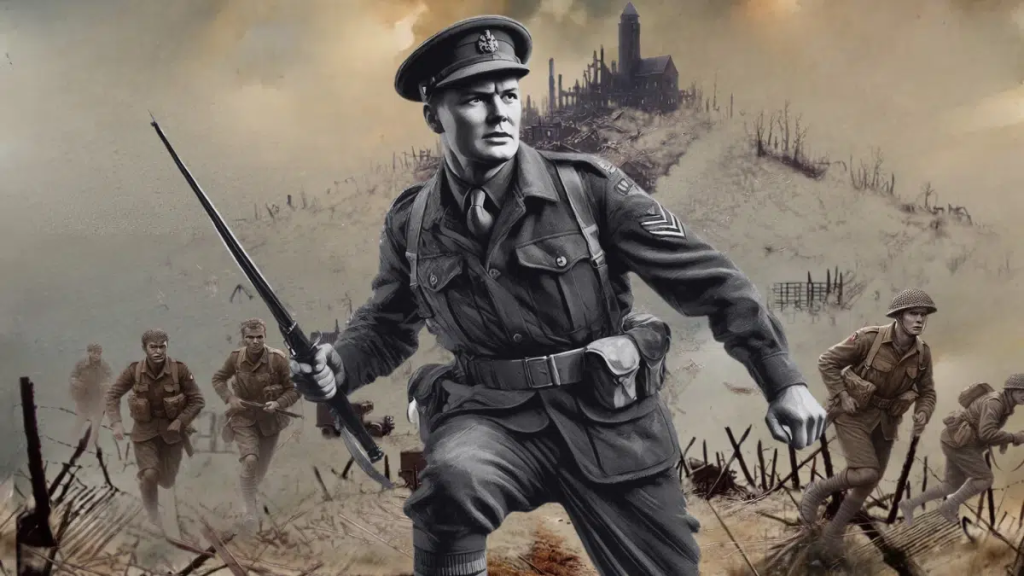
Born in 1906 in Colombo, Ceylon (now Sri Lanka), Churchill was raised in a family steeped in military tradition. His father, Alec Fleming Churchill, served as an engineer in the British Empire, and young Jack seemed destined for a conventional military career.
After graduating from the Royal Military Academy at Sandhurst in 1926, he was commissioned into the Manchester Regiment and posted to Burma.
During his service, he mastered motorcycle dispatch riding, once crashing a bike into a colonial governor’s garden during a joyride—a stunt that nearly earned him a court martial.
By 1936, after 10 years of service, Mad Jack got bored with peacetime drills. He left the army to pursue his other eccentric passions.
Mad Jack Before WW II
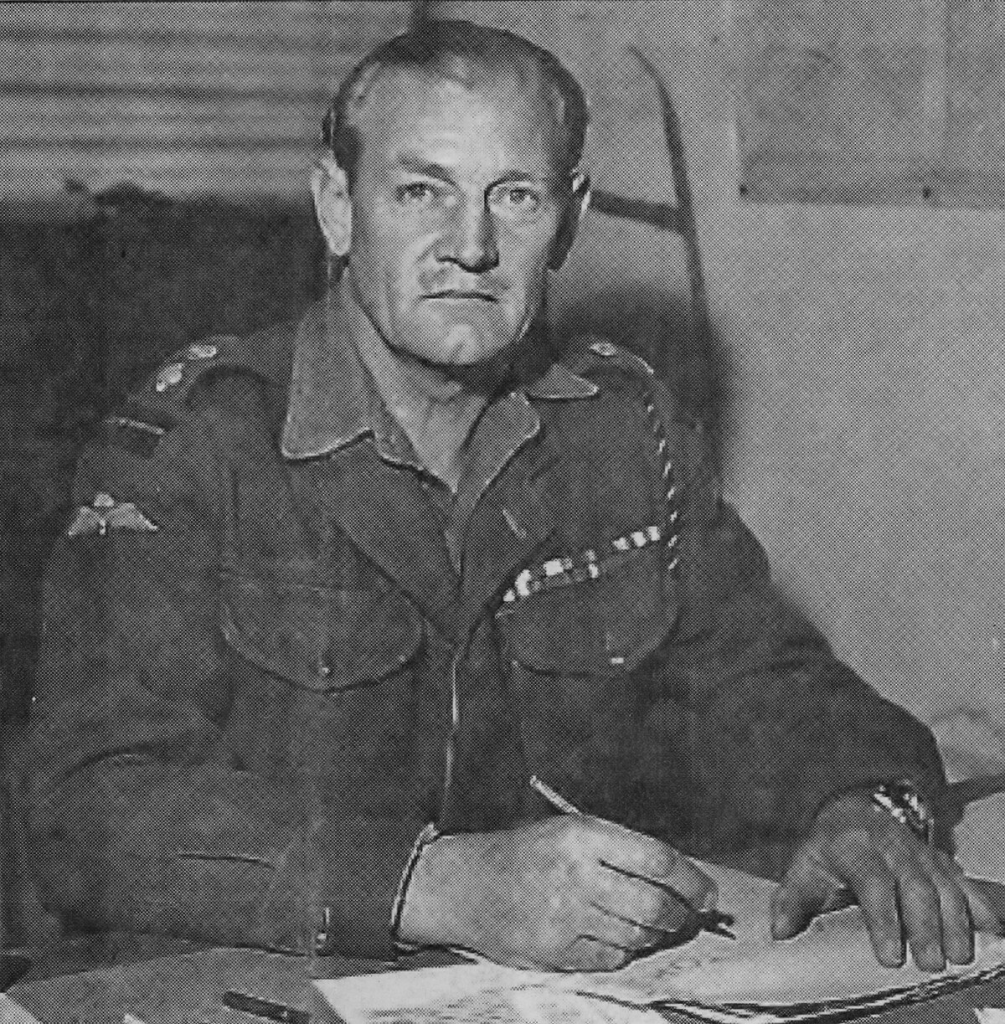
He initially took up a job as an editorial staff member at the Nairobi Paper; however, this was even duller than the military, so he quit his job again and decided to try his luck at acting.
Here, he found relative success, and he managed to appear as a Mongol archer in The Thief of Bagdad (1924) and as a bagpiper in A Yank at Oxford (1938).
Jack had learnt to shoot the English longbow during his free time in the army and became very good at it. He competed for Britain at the 1939 World Archery Championships in Oslo, finishing second in the men’s event. This feat was even more impressive as he was the only English man in the competition.
When WWII broke out, Churchill immediately signed up to join the British Army and the Manchester Regiment. He was posted to France in late 1939. He arrived at his post carrying his longbow, a sword (registered as “essential equipment”), and his pipes.
When superiors questioned his medieval arsenal, he retorted, “An officer without a sword is improperly dressed.”
The Retreat to Dunkirk
The presence of British forces in the North of France did very little to halt the German advance early in the war, and soon, thousands of British Soldiers had to retreat to avoid capture.
Churchill was actively involved in several rearguard actions to ensure the safe retreat of his comrades. During one of those events, he had a close brush with death while taking on a German machine gun. His man had warned him earlier to run, but he simply replied that he was not in the mood to do so.
In another instance during the retreat, Churchill allegedly ambushed a German patrol. Creeping through hedgerows, he loosed an arrow into the chest of a Nazi sergeant while his comrades got the rest with their rifles. Churchill’s kill is believed to be the last confirmed longbow kill in combat.
He was awarded his first military cross for his bravery during the retreat.
One comrade recalled, “You’d follow him into hell—partly out of loyalty, partly to see what he’d do next.”
The Norway Campaign: Bagpipes, Blades, and Bloody Mayhem
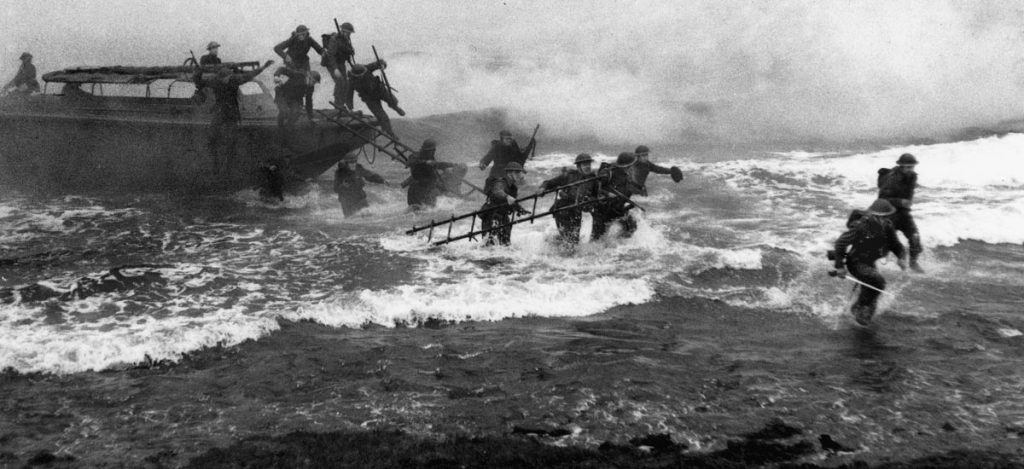
After being lifted across the English Channel to England, Churchill heard about the formation of the British commando. A new military unit of elite fighters that would be tasked with carrying out the most daring missions of the war. The pay wasn’t great, but they promised volunteers a lot of action, so naturally, Mad Jack Churchill signed up.
One of Churchill’s first tasks as a commando was a raid on the German-occupied Norwegian island of Vågsøy.
He led two companies in the attack. As the landing crafts neared the beach under machinegun fire, he stood atop the boat’s ramp, playing “The March of the Cameron Men” on his bagpipes. With the final note, he drew his sword, roared and leapt into the icy surf.
He and his men captured the Garman artillery on the island with minimal casualties.
The raid crippled Nazi supply lines and boosted Allied morale. For his leadership, Churchill received his second military cross.
Read Also:
Top 8 Failed Assassination Attempts That Would Have Changed History
7 reasons it was so dangerous to be a Tunnel Rat in the Vietnam War
Mad Jack Captures 42 Germans in Italy

In July 1943, Mad Jack Churchill was commanding No. 2 Commando, a battalion-sized British Unit, during the Salerno landings in Italy. During the fighting, he organized his men into a column for a night attack on the nearby town of Piegoletti.
Using the darkness and confusion to his advantage, he ordered his men to shout “Commando!” as they charged at the German defenders.
Churchill led the attack personally. Armed with his sword, a Colt revolver, and a sack of grenades, he and another sergeant captured 42 German soldiers and the mortar they were manning.
When Agar asked how he’d pulled it off, Churchill smirked: “Never let the enemy count your men.”
The stunt earned him a Distinguished Service Order (DSO) and a reputation as a one-man army.
Mad Jack’s Luck Finally Runs Out
In 1944, Churchill’s luck faltered. He was sent to Yugoslavia to organize the local partisans in the area. While Leading a raid, his unit was ambushed.
As the Germans closed in on his position, he took out his pipe and played “Will Ye No Come Back Again?”.
Thinking he was related to Winston Churchill, the British prime minister, Mad Jack was airlifted to Munich for further investigation. Afterwards, he was transported to the Sachsenhausen concentration camp designed for “prominent” POWs.
After a botched escape attempt, Mad Jack was transferred to another POW camp in Tyrol in 1945
However, Mad Jack could not be held prisoner for long. He took advantage of a power failure at night and simply walked away from the camp in the darkness.
Keeping off the road, he walked for more than 150 miles into Italy. He later came across an American patrol vehicle that carried him to safety.
Of his resilience, he later joked, “I simply hadn’t met my yearly walking quota.”
PostWar Adventures: The Eternal Adventurer
After WWII, Churchill remained in the British Army, serving in British-controlled Palestine. He also became an instructor at an airborne school, teaching paratroopers how to fight with swords.
Not one to settle for a dull retirement, he spent his later years indulging in adventure—riding motorcycles across India and becoming an expert surfer,
Conclusion: The Last Knight of Modern Warfare
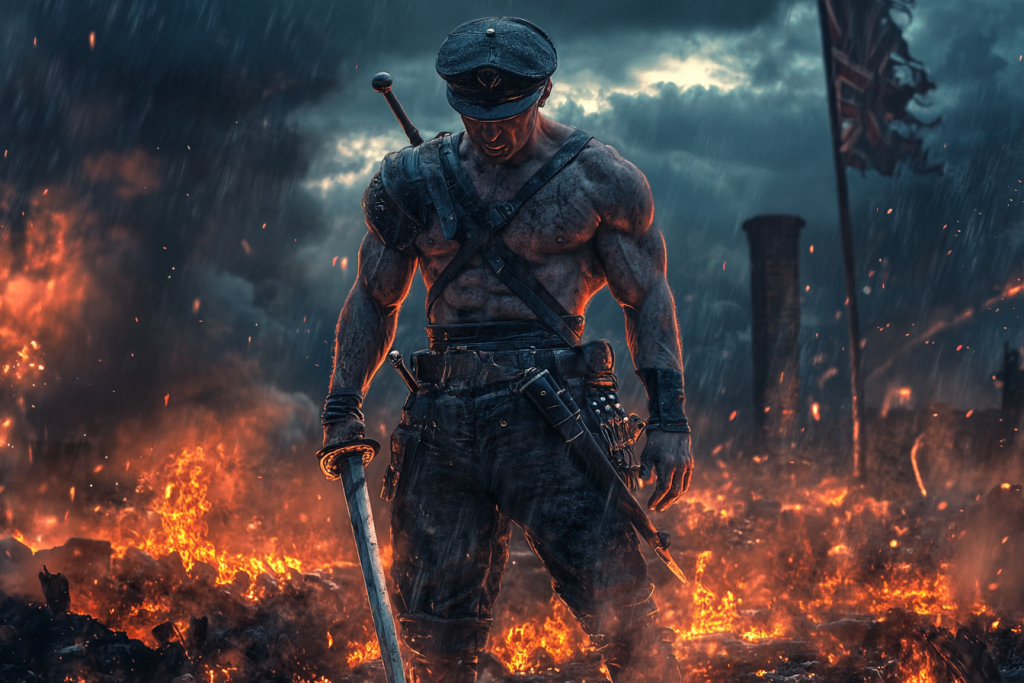
Mad Jack Churchill defied every rule of modern combat. In an age of faceless destruction, he fought with panache, turning war into a duel and enemies into bemused spectators. Was he a lunatic? A genius? Or simply a man who refused to let war strip life of its humour and humanity?
Perhaps all three.
His legacy isn’t just in medals or myths—it’s a reminder that even in darkness, courage can wear a kilt, carry a sword, and play a damn fine-tune on the bagpipes.
